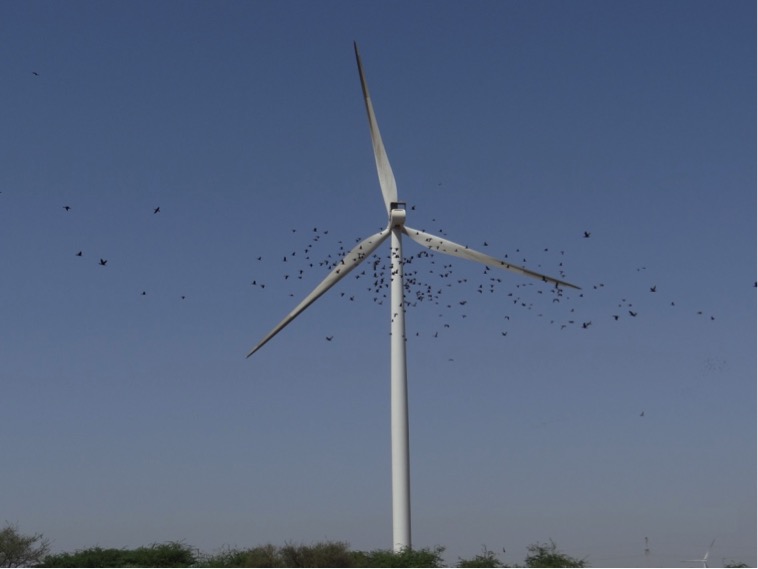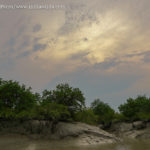IndiaWilds Newsletter Vol. 11 Issue VI
ISSN 2394 – 6946
Climate Crisis & heat wave:
India is boiling. Our cities have become a cauldron. The temperatures in New Delhi have touched 48 deg centigrade in June 2019. Most of the cities in India recorded their maximum temperatures this june. In the last 30 days 10 cities in India have recorded the hottest temperatures on earth. In most of the places the average temperatures are higher by 5-7 degrees centigrade. And that is more than what human body can tolerate. When such an unprecedented heat wave singes the country, it takes its toll.
In Bihar 184 people have died due to heat wave. To prevent people from moving out into the open and face heat stroke, the Government has invoked Section 144 to mandatorily force people to remain inside their homes. All construction work between morning 11 am and afternoon 4 pm has been banned.
Four people traveling in Kerala Express died due to heat when the train was approaching Jhansi. (LiveMint, 11 June) Such is the heat that traveling in non-air conditioned compartments means inviting death.
Between 2010 and 2018, 6000 people are officially declared dead due to heat waves in India. This was stated by Minister for Earth Sciences Dr. Harsh Vardhan in Lok Sabha. There are many more deaths which go unreported or remain unclassified.
There is no denying the fact that the heat waves are becoming more and more intense and frequent. This was also admitted by the Hon’ble Minister Dr. Harsh Vardhan in Lok Sabha on Jan 3rd 2019.
Since 2004, India has seen 11 of the 15 warmest years. (Business Insider, June 12). This is due to Climate Crisis where extreme weather events are becoming more intense and frequent. As a country we have to wake up to the reality that the Climate crisis has made our cities as boiling pots. Unfortunately the Government is only looking at this issue from a very narrow perspective and reacting to it. The Government is talking about early warning systems to communicate people about the heat wave and to prevent deaths. There is no effort to acknowledge the root cause of the issue and resolve it.
Where are the trees in my city?
We are increasingly concretising our planet. Cities have become concrete jungle. Even smaller towns these days have lost their trees and are increasingly resembling the urban concrete jungles. Over a period of time we have lost our trees in cities under the pretext of road widening and new buildings and infrastructure creation. In 2000 when the local authorities in Bangalore cut down trees standing in the road dividers, many people protested. However, others justified that it is important to cut down the big trees standing in the road dividers. Same thing happened in all the cities. So we don’t see any trees in the road dividers. After that, came the road widening spree and the tall hard growth trees standing on the road sides were mercilessly cut down. There is technology available to relocate and replant these trees. However, the Government prefers to simply cut down the trees. No amount of plantations of saplings can replace the carbon sequestration and other ecosystem services rendered by a hard growth tree.
People these days also cut down the trees as they complain that they need to sweep the fallen leaves and twigs. I found this stunning as these complaints are from various cities as well as smaller towns. Gone are the days when we used to have garden resembling a mini jungle. These days everybody wants their yard clean ie devoid of trees and plants. Even planting of plants has to be in a pattern with clean rows.
No one ever thinks that there are no straight lines or squares in nature. A river meanders and flows. A bird creates a nest, which is never square, or rectangle or shaped like a box. A next with eggs will survive a fall. However a square or rectangle shaped object created with the same nesting materials used by birds will not survive a fall. The reason for the same is rooted in simple physics as stress builds up in the corners. If there is a flooding then it will hurt square or rectangle shaped houses. However, water can easily flow around cylindrical/round shaped houses. Wish we remember this traditional knowledge and use it like other species.
In the big cities, bunglows have given way to multi-storied apartments and residential apartments have become converted to commercial spaces. The offices in the first floor feel that the trees are blocking their name boards and customers can miss it. So they too prefer to cut down the trees. One way is to concretise the entire area around the tree so that the tree is choked and dies. The other modus operandi is to slowly hack away at the trunk, so that the tree haemorrhages and dies. Then it becomes easier to cut it down.
Our cities are growing bigger and becoming mega cities as job opportunities are only concentrated in bigger cities. This leads to increased population density and increased concretisation where every effort is to utilise each inch of space. The cities look like concrete jungles with hardly any earth visible for rainwater to percolate. The concrete gets heated up and increases the ambient temperatures of the cities. With increased use of Air conditioners, the temperature increases further as studies have shown that use of ACs increase the temperature by about 2 degrees centigrade.
Studies in USA have shown that temperatures of rural areas are as much as 7 deg lower than the urban areas as the temperatures of urban areas increase due to heat island effect. (Climate change and heat island; IndiaWilds Newsletter May 2015, https://www.indiawilds.com/diary/indiawilds-newsletter-vol-7-issue-v/ )
Planting of trees and waterbodies is very important and should be mandatorily included in our urban planning. People should be sensitised about the benefit of the shade given by trees as well as their role in carbon sequestration. It is very important that the city parks are again planted with native trees and allowed to grow big. Lawns need more water. So focus should be to convert all the parks into big woody areas with native bushes as undergrowth. Let the areas appear wild and green as that will help us more than the lawns.
Climate Crisis & Water shortage:
As our big cities have become mega cities, they have over exploited the ground water. These cities are now dependent on water brought through canals from long distances. With an exploding population, the need for water has skyrocketed. And in summer with the unprecedented heat wave, there is massive shortage of water.
Many localities in big cities are already dependent on water supplied through tankers. These tankers are filled by extracting ground water from borewells which is illegal. However, the tanker mafia under political patronage does that. In this heat wave, the tanker mafia has tripled the price of water. As a consequence, people are suffering. Water wars have started in Chennai. IT companies are asking their employees to work from home or bring water to office. Hotels are shutting down.
Government and people don’t understand that the single biggest thing that can destroy our economy is lack of water. Civilisations have perished due to lack of water when a river has changed course or run dry. Without water the sanitation and hygiene conditions can deteriorate. And that is a sure shot invitation to diseases. The Harappa civilisation had collapsed because 4200 years ago the annual monsoons continuously failed for 200 years. History has a nasty habit of repeating itself if we don’t learn lessons from it.
As a nation we have to now urgently change our lackadaisical attitude about our environment and forests and immediately rethink our approach to industrialisation at the cost of diverting forests. Wake up before it is too late. Since politicians with their narrow focus on making money for themselves and their cronies will not listen, it is the people who have to take action and force their public representatives to act and save our forests and environment and ultimately save ourselves as our well being is intricately linked with the wellbeing of our environment and forests.
Conservation News:
Climate change devastates permafrost of Canadian High Arctic
Climate change is showing its impact around the world. The record heat waves killing hundreds of people in India is not an isolated phenomenon. Climate Change has become a full blown Climate Crisis. The entire earth is being heated up. Even the very cold high arctic areas of Canada, which is always covered under very thick layers of ice called permafrost, is bearing the brunt of this climate crisis and is heating up.
A research paper published in Geophysical research letters (Climate change drives widespread and rapid thermokarst development in very cold permafrost in the Canadian High Arctic; Louise M. Farquharson et al., doi: 10.1029/2019GL082187) has found the due to the climate warming there is widespread development of thermokarst in the ice-rich permafrost. The researchers observed thermokarst development in very cold permafrost at 3 monitoring sites along a 700 km transect in the Canadian High Arctic. The rapid landscape response to above average summer warmth is due to limited thermal buffering from overlying ecosystem components and near‐surface ground ice.
The researchers write that “In the Canadian High Arctic between 2003 and 2016, a series of anomalously warm summers caused mean thawing indices to be 150 – 240 % above the 1979‐2000 normal resulting in up to 90 cm of subsidence over the 12‐year observation period.” The greatest thawing was observed in Mould Bay. The research data illustrates “that despite low mean annual ground temperatures, very cold permafrost (<‐10°C) with massive ground ice close to the surface is highly vulnerable to rapid permafrost degradation and thermokarst development. We suggest that this is due to little thermal buffering from soil organic layers and near surface vegetation, and the presence of near surface ground ice. Observed maximum thaw depths at our sites are already exceeding those projected to occur by 2090 under RCP 4.5.”
With such a massive amount of melting of permafrost resulting in upto 90 cm ie. 2.95 feet subsidence will lead to many coastal cities going under water. Lot of roads, internet cables, power cables etc will get inundated. It is a very alarming situation, which is going unnoticed by our politicians and Government agencies. We have to remember that we are living in a connected world. Politicians will continue to bicker over the work needed to be done as hard decisions need to be taken to rein in on the high carbon lifestyle that we have become used to. Unless we act, together we will sink.
Minister claims India will lead by example in Combating desertifiction
Union Environment Minister said that we as a country make targets not under any global pressure but for our own country’s real sustainable development, and as in the past India will play a leadership role and will lead by example in combating desertification. Speaking at an event in New Delhi on the occasion of World Day to combat desertification and drought Shri Javadekar announced that India will be hosting the fourteenth session of Conference of Parties (COP – 14) from 29th August – 14th September 2019.
The Union Minister further highlighted that with about 30% of country’s total geographical area being affected by land degradation; India has high stakes and stands strongly committed to the Convention. Shri Javadekar said that various schemes have been launched by the Government of India such as: Pradhan Mantri Fasal Bima Yojana (PMFBY), Soil Health Card Scheme, Soil Health Management Scheme, Pradhan Mantri Krishi Sinchayee Yojna (PKSY), Per Drop More Crop etc. which are helping to reduce land degradation. Unfortunately, despite these claims, the Government is sacrificing forests at a relentless pace for industries and mines. The Ministry of Environment and Forests is acting as a clearing house for projects. So it is a mystery that the ministry is claiming success in fighting land degradation.
The Union Minister also unveiled the logo of COP-14 on the occasion.
The Union Minister also launched a flagship project on enhancing capacity on forest landscape restoration (FLR) and Bonn Challenge in India, through a pilot phase of 3.5 years implemented in the States of Haryana, Madhya Pradesh, Maharashtra, Nagaland and Karnataka. Ministry of Environment, Forest and Climate Change (MoEFCC) in partnership with The International Union for Conservation of Nature (IUCN), through this flagship project aims to develop and adapt best practices and monitoring protocols for the Indian states and build capacity within the five pilot states on FLR and Bonn Challenge. This will be eventually scaled up across the country through subsequent phases of the project.
The Bonn Challenge is a global effort to bring 150 million hectares of the world’s deforested and degraded land into restoration by 2020, and 350 million hectares by 2030.At the UNFCC Conference of the Parties (COP) 2015 in Paris, India also joined the voluntary Bonn Challenge pledge to bring into restoration 13 million hectares of degraded and deforested land by the year 2020, and additional 8 million hectares by 2030. India’s pledge is one of the largest in Asia.
United Nations has 3 Rio Conventions namely, United Nations Framework Convention on Climate Change (UNFCCC), Convention on Biological Diversity (CBD) and United Nations Convention to Combat Desertification (UNCCD). Established in 1994, the United Nations Convention to Combat Desertification (UNCCD) is the only legally binding international agreement linking environment and development issues to the land agenda. In 1994, the United Nations General Assembly declared 17 June the “World Day to Combat Desertification and Drought” to promote public awareness and the implementation of the UNCCD in the desertification affected countries.
India is hosting the Fourteenth session of Conference of Parties (COP – 14) from 29th August – 14th September 2019 at India Expo Mart Limited, Greater Noida. One of the primary functions of the COP is to review reports submitted by the Country Parties detailing how they are carrying out their commitments. India will take-over the COP presidency from China for two years until the next COP is hosted in 2021.
Over 5,000 representatives from over 197 countries drawn from national, regional and local governments, science and research communities, the private sector, international and non-governmental organizations and all forms media will address the issue of combating desertification, land degradation and drought during the two-week event.
Wind turbines a threat to birdlife
By Susheela Srinivas
Bengaluru, May 27: Although wind is a green source of renewable energy, a new study has revealed that wind turbines are posing a threat to lives of birds in their vicinity. Birds colliding with turbine blades are dying.
Researchers were invited by two windfarm owners — one in Samakhiali in Kutch, Gujarat and the other in Harapanahalli, Davangere, Karnataka — to investigate bird mortalities in their farms.
The study found 47 carcasses of birds belonging to 11 species in Samakhiali, among which were threatened species. In Harapanahalli area, seven dead birds belonging to three species were uncovered.
The team scanned a radius of 130 m from the turbines, choosing a spiral path from the base of the windmill. This ensured that all surrounding areas were covered, and no carcass was missed. Researchers looked for bird cadavers, signs of injuries on the bodies and remains of feathers and bones around the wind energy tower. Data was recorded based on the condition of the remains, species, and the distance from the turbine. The study had to consider removal rates due to scavenger animals.
Overall, 59 turbines of the Kutch windfarms were studied, and 23 cycles of searches were conducted at each turbine, with an average gap of 40.5 days between two consequent searches.
This region is close to four biodiversity areas, with diverse bird population, and is an important wintering site for migratory birds from the Arctic, Europe and central Asian regions. Among the 47 deaths, 43 were recorded in the migratory season, with maximum carcasses found within 20 m from the turbines. While Eurasian collared doves recorded the most mortalities, bodies of Dalmatian pelican and painted storks — both threatened species — were also found.
“The surrounding grassy plains support species of raptors like Harriers, Eagles and Kestrels that glide in a circular movement. This increases its chances of colliding with the windmill blades. Raptors are long-living species that lay few eggs. Increasing deaths of these birds can endanger them as a species,” pointed out Dr Ramesh Kumar Selvaraj, ornithologist and team member, while speaking to India Science Wire.
In Davangere, the wind farm is located near a deciduous forest area with a rich avifaunal biodiversity of 115 bird species. During 2014-2015, 24 turbines areas were searched over nine cycles. Seven carcasses were found with four of them during the migratory season. All were seen within 60m from the windmill.
“Our investigation indicates approximately 0.5 deaths per turbine, which may be an underestimation, as only collision deaths were recorded at 40-day intervals. Constant monitoring will escalate the figures significantly,” the researchers said.
The scientists suggest appropriate mitigation options should be taken up. Detailed bird monitoring studies, careful selection of wind farm sites keeping in mind bird habitations can help reduce the impacts of windmills on birds to a large extent.
The team comprised Ramesh Kumar Selvaraj (Bombay Natural History Society, Mumbai); Anoop V, Arun P R, Rajah Jayapal, and A Mohammed Samsoor Ali (Salim Ali Centre for Ornithology and Natural History, Coimbatore). The study results have been published in the journal Current Science.
(India Science Wire)
Study throws new light on evolution of northern Indian Ocean
By Sunderarajan Padmanabhan
New Delhi, May 28
An international team of scientists has unearthed ancient rock samples from the seabed near Laxmi Basin located on the western margin of the Indian continental plate. An analysis of these samples shows that the evolution of the northern Indian Ocean was far more complex than previously thought.
The tectonic evolution of Laxmi Basin has been a subject of intense study for over two decades. Scientists have been using geo-dynamic models to describe it as they did not have access to any physical rock samples buried in the deep ocean floor. The Laxmi Basin is a 300 km wide, marginal depression enclosed by the Indian continental shelf and the Laxmi Ridge on either side.
It was believed by some that the basin was formed by the extension of the Indian continental tectonic plate, while another theory held that the surface of the basin composed of an oceanic crust overlying an extinct spreading centre formed due to drifting of two tectonic plates.
Based on the newly found samples, scientists have now concluded that a short-lived subduction event had occurred around 70 million years ago in Laxmi Basin.
“The new knowledge will help us determine precisely as to how the Indian plate moved away from Madagascar and Seychelles just prior to the Deccan volcanism. These findings will have implications for a better understanding of how subduction zones begin and evolve,” explained Dr. Dhananjai Pandey of the Goa-based National Centre for Polar and Ocean Research, while speaking to India Science Wire.
Dr. Pandey and Prof. Peter D. Clift of Louisiana State University had jointly led the International Ocean Discovery Program (IODP), which found the samples. During the 60-day expedition, a team of 30 scientists and technicians conducted drilling and coring operations. They collected samples of basement rock after drilling through 1100 meters deep into the sea floor in a part of Laxmi Basin.
The expedition was followed by post-cruise study by Dr Pandey in collaboration with Dr Anju Pandey and Prof. Scott Whattam of King Fahd University of Petroleum and Minerals, Saudi Arabia. The study showed distinctive geochemical imprints of igneous rocks in the area, indicating that there was subduction of an older oceanic crust under a younger oceanic crust.
Dr Pandey said “the finding provides glimpse of a convergent plate motion in the area which is otherwise dominated by divergent tectonics that had led to the breakup of super continent Gondwanaland into three parts: Madagascar, Seychelles, and India.” The study results have been published in journal Nature Communications.
(India Science Wire)
A fungus that can degrade endosulfan identified
By Dr. Aditi Jain
New Delhi, May 30: The excessive use of chemicals used as pesticides and insecticides poses danger to the environment as well as human health. A group of scientists at Delhi University has now identified a fungus that can help degrade residue of one such insecticide.
Endosulfan was a commonly used insecticide until its ill effects came to light in Kasaragod district of Kerala. The insecticide was used to get rid of insects in cashew plantations there and exposure to it is reported to have led to several health impacts in humans.
Although there is a general ban on its use, authorities allow its use for some cases such as to take care of bollworm infestation in cotton fields, in the absence of any alternative. In such a scenario, it is important to develop strategies to degrade excess endosulfan in soil and environment so that it does not reach water bodies and ultimately humans.
Researchers first searched the protein database online for an enzyme that can bind and thereafter degrade endosulfan and its other toxic form of endosulfan sulphate, which is formed when microbes act on it. Based on the results from this survey, scientists speculated that two enzymes phenol Hydroxylase from fungus Trichosporon cutaneum and bacterial CotA laccase from Bacillus subtilis (3ZDW) may be effective in neutralizing the toxic chemical.
To prove their hypothesis, the scientists got the fungus Trichosporon cutaneum from the Microbial Type Culture Collection and Gene Bank at Institute of Microbial Technology, Chandigarh. It was grown in a medium deficient in sulphur so that it can utilize endosulfan and endosulfan sulphate as source of sulphur for its growth. The fungus degraded endosulfan, which is composed of alpha and beta endosulfan differentially. The fungus degraded 60.36 % alpha-endosulfan, 70.73 % beta-endosulfan and 52.08% endosulfan sulphate in 15 days. This finding validated that the fungus can be used for cleaning areas polluted with endosulfan.
“Our work can be used in the development of bio-remediation technology. We can use this knowledge to clean the environment,” says Dr. Dileep K Singh, Professor at Delhi University and leader of the research team, while talking to India Science Wire.
The research team also included Ngangbam Sarat Singh and Ranju Sharma. The findings have been published in journal Enzyme and Microbial technology.
(India Science Wire)
Equipment Discussions:
Hasselblad launches Medium Format Camera X1D II 50C and other lenses
Iconic camera company Hasselblad, a leader in medium format imaging, has launched an update to its X1D 50C camera. The new camera is called X1D II 50C. The X1D II 50C is also a mirrorless camera with a sensor size that is 1.7x larger than 35mm full frame sensor.
The X1D II 50C has a new 50 Mega pixel sensor. The sensor size is 43.8 x 32.9mm. Consequently the pixel size is a massive 5.3×5.3 μm. Hasselblad claims that the camera has 14 stops of dynamic range. And coupled with the 16 bit RAW, the imagery is true to life.
The X1D II 50C has an upgraded electronic platform and sports a higher resolution 3.6-inch size 2.36-million-dot touch display. The X1D II 50C also has a OLED electronic viewfinder (EVF) with 3.69-million dots. The rear display screen has (1024×768) pixels to give a vivid and true to life image viewing experience.
The refresh rate has been increased, shutter lag reduced including black out time between frames and time to start up the camera has been reduced by half. With the new Phocus Mobile 2 which connects via USB-C and wifi to transfer files from the X1D II 50C to thei iPad Pro or iPad Air for editing and sharing.
The Hasselblad X1D II 50C has a leaf shutter system. It can sync at 1/2000 sec.
The X1D II 50C can be set at ISO 100 to ISO 25600. It can shoot at up to 2.7 fps.
The camera has Dual SD UHS-II memory card slots for recording.
The camera manufacturer hasn’t paid enough attention on video. If needed one can shoot video in 1080p at 25fps or 30fps.
Overall the camera looks compact with neat layout and nice. I would love to have an articulating LCD. As a photographer one can do some serious work with this X1D II 50C.
Availability: The Hasselblad X1D OO 50C camera is available immediately for order.
Price: The Hasselblad X1D II 50C is priced at $5750 USdollars.
For more details click on the below link –
Sony Launches 600mm F4 GM OSS Super-telephoto Lens
Sony launches FE 200-600mm f5.6-6.3 super-zoom lens
Natural History
COUNTRY NOTEBOOK: M. Krishnan: ‘Fish, Feathers and Oil‘ shared By Saktipada Panigrahi
https://www.indiawilds.com/forums/showthread.php?8852-Country-notebook-m-krishnan&p=87654#post87654
Wildlife Photography
Tiger Mating by Vipin Sharma
https://www.indiawilds.com/forums/showthread.php?19200-RTR-diary-May-19
Leopard by Shyamala Kumar
https://www.indiawilds.com/forums/showthread.php?19175-After-marking-his-territory
Greater Rann of Kutch by Mrudul Godbole
https://www.indiawilds.com/forums/showthread.php?19184-Greater-Rann-of-Kutch
Large-tailed-Nightjar by Sandipan Ghosh
https://www.indiawilds.com/forums/showthread.php?19194-Large-tailed-Nightjar
Yellow-Wattled-Lapwing by Murugan Anantharaman
https://www.indiawilds.com/forums/showthread.php?19166-Yellow-Wattled-Lapwing
Northern-Pintail-Ducks by Sudarsan Yennamalli
https://www.indiawilds.com/forums/showthread.php?19171-Northern-Pintail-Ducks
Wasp by Prajwal Ullal
https://www.indiawilds.com/forums/showthread.php?19177-Claiming-the-dead
Noctiluca (bioluminescent plankton) by Abhishek Jamalabad
https://www.indiawilds.com/forums/showthread.php?19201-Noctiluca-(bioluminescent-plankton)
This is the 126th issue of IndiaWilds. The photo of two cute desert fox pups playing adorns the cover page of this issue. Games is the medium through which these pups learn vital life lessons. It is also a part of their growing up and many times decides the sibling who will dominate in future. The desert fox lives in harsh conditions and has to endure a lot of pain to raise its kids. So we humans need to be careful when any of our actions trample upon their habitat. These days car companies encourage testing of their vehicles to set speed records in the desert. Such activities results in trampling of the vegetation as well as eggs of ground nesting birds and dens of lesser carnivores. Hopefully such car companies and speed enthusiasts come to their senses.
This lead article in this issue talks about the climate crisis and the present heat waves. We humans are not adapted to high temperatures that prevail in the desert landscapes like wild animals of the desert areas like Rann of Kutch. Like the desert fox that lives in a burrow on the earth, houses constructed with mud and local materials are better suited for desert like heat waves than our concrete houses. Hopefully we humans do more research on our nature to learn survival techniques and also to plant trillions of trees to help us save from the vagaries of Climate Crisis.
I look forward to your inputs and support in preserving the last tracts of wilderness and wildlife left in our beautiful country and raising awareness about it. For other interesting articles and images check –
http://www.indi
To post in the IndiaWilds forums, you can register free of cost using your Full Name as user id at:
http://www.indiawilds.com/forums/register.php
If you are already a member of IndiaWilds and have forgotten your user id and/or password you can mail to:
administrator@indiawilds.com
If you want to contribute original articles, or for any image enquiries please send a mail to:
administrator@indiawilds.com
Regards,
Sabyasachi Patra
Profile | Contact Us | Facebook | Diary | Equipment reviews | Forums | IndiaWilds You Tube Channel
Please post your views and feedback in the comments below.
- GoPro Hero 12 Black - 6 September,2023
- Leopards: The Last Stand - 2 July,2023
- Drifting in the Waters of Sundarbans - 26 March,2023














Oh yes, we are killing ourselves along with the trees.
I never realised the wind turbines could be a threat to avian life.
I took comfort in ogling the 600 OSS Sony prime! The 200-600 5.3-6.3 zoom is mouthwatering too.